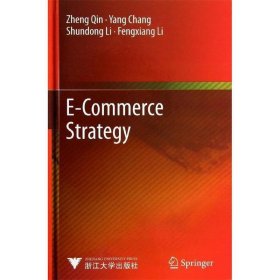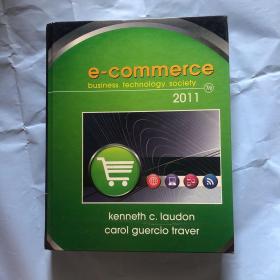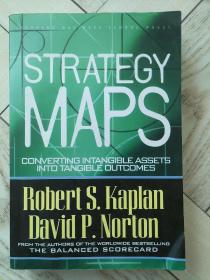
ECommerce Strategy
¥ 50 3.6折 ¥ 138 九五品
仅1件
作者覃征
出版社浙江大学出版社
ISBN9787308118606
出版时间2013-12
版次1
装帧平装
开本16开
纸张胶版纸
页数351页
字数99999千字
定价138元
上书时间2024-04-07
- 最新上架
商品详情
- 品相描述:九五品
- 商品描述
-
基本信息
书名:ECommerce Strategy
定价:138.00元
作者:覃征
出版社:浙江大学出版社
出版日期:2013-12-01
ISBN:9787308118606
字数:703000
页码:351
版次:1
装帧:平装
开本:16开
商品重量:
编辑推荐
本书从国家、行业、企业三个层次对电子商务战略进行对比与分析,帮助读者建立对电子商务战略的基本认识,提升读者对电子商务战略关键问题的分析和理解能力。在阐述战略理论的基础上,结合大量实例和数据,揭示电子商务战略的发展与变化规律,以建立一套完备的电子商务战略理论体系,为电子商务战略研究者和制定者提供前瞻性的指导。 本书首次从国家、行业、企业三个层次全面分析电子商务战略。立足实例,运用比较学方法,结合传统战略理论研究当今世界电子商务战略。重点介绍了中国战略现状,为世界各国研究中国经济发展提供参考和帮助。
内容提要
覃征等编的《电子商务战略(英文版)(精)》从国家、行业、企业三个层次对电子商务战略进行对比与分析,帮助读者建立对电子商务战略的基本认识,提升读者对电子商务战略关键问题的分析和理解能力。在阐述战略理论的基础上,结合大量实例和数据,揭示电子商务战略的发展与变化规律,以建立一套完备的电子商务战略理论体系,为电子商务战略研究者和制定者提供前瞻性的指导。本书首次从国家、行业、企业三个层次全面分析电子商务战略。立足实例,运用比较学方法,结合传统战略理论研究当今世界电子商务战略。重点介绍了中国战略现状,为世界各国研究中国经济发展提供参考和帮助。
目录
1 E-Commerce and E-Commerce Strategy 1.1 Fundamentals of E-Commerce 1.1.1 Definition of E-Commerce 1.1.2 Origin and Development of E-Commerce 1.1.3 Research Contents of E-Commerce 1.2 Strategy 1.2.1 Definition of Strategy 1.2.2 Main Features of Strategy 1.3 Strategic Environment 1.3.1 Significance of the Strategic Environment 1.3.2 Strategic Environment and Strategy 1.4 E-Commerce Strategy 1.4.1 E-Commerce Strategy Outline 1.4.2 Research Methods for E-Commerce References2 National E-Commerce Strategy 2.1 The United States 2.1.1 Economic Conditions 2.1.2 Background to U.S E-Commerce Strategy 2.1.3 Orientation of U.S.E-Commerce Strategy 2.1.4 Contents 0f U S.E-Commerce Strategy 2.1.5 EffectsofU S.E-Commerce Strategy 2.2 EuropeanUnion 2.2.1 EU Basic Conditions 2.2.2 Background to EU E-Commerce Strategy 2.2.3 Odentation of EU E-Commerce Strategy 2.2.4 Contents of EU E-Commerce Strategy 2.2.5 Intemet Use and E-Commerce in the EU 2.3 Japan 2.3.1 Introduction to Japan 2.3.2 Japan's Information Industry Strategy 2.3.3 Background to the Japanese E-Commerce Strategy 2.3.4 Strategic Orientation of Japanese E-Commerce 2.3.5 Contents of Japanese E-Commerce Strategy 2.3.6 Strategic Efroits 2.4 China 2.4.1 Basie Situation of China 2.4.2 Background to Chinese E-Commerce Strategy 2.4.3 Orientation 0fChinese E-Commerce Strategy 2.4.4 Details 0f ChineseE-Commerce Strategy 2.4.5 Effect of Chinese E-Commerce Strategy 2.5 Australia 2.5.1 Basic Condition of Australia 2.5.2 E-Commerce Background Of Australia 2.5.3 Orientation 0f Australian E-Commeree Strategy 2.5.4 Contents of Australian E-Commerce Strategy 2.5.5 Effects of Australian E-Commerce Strategy 2.6 The United Arab Emirates 2.6.1 Introduction to the United Arab Emirates 2.6.2 Strategic Background 0f E-Commerce 2.6.3 E-Commerce Strategic Orientation 0f the UAE 2.6.4 E-Commerce StrategyintheUAE 2.6.5 Implementations 2.7 India 2.7.1 Overviewoflndia 2.7.2 Background to Indian E-Commerce Strategy 2.7.3 Orientation 0f E-Commeree Strategy in India 2.7.4 Details about India's E-Commerce Strategy 2.7.5 Implementation of E-Commerce Strategy 2.8 Ireland 2.8.1 Introduction to Ireland 2.8.2 E-Commerce Strategic Background 2.8.3 E-Commerce Strategic Orientation 2.8.4 E-Commerce Strategy in Ireland 2.8.5 Implementation Achievement of E-Commerce Strategy 2.9 Singapore 2.9.1 Overview of Singapore 2.9.2 Strategic Background 2.9.3 Strategic Orientation 2.9.4 Detailed E-Commerce Strategy 2.9.5 Implementation Achievement of the Strategy 2.10 Republic of Korea 2.10.1 Basic Conditions 2.10.2 Background to ROK's E-Commerce Strategy 2.10.3 Orientation 0f ROK's E-Commerce Strategy 2.10.4 ROK's E-Commerce Strategy 2.10.5 Measures 2.10.6 Current Situation and Prospects 2.11 Features of Each Nation 2.11.1 Common Features 2.11.2 National Strategic Personalities References3 E-CommerceStrategy of Industries 3.1 Construction Industry 3.1.1 Overview of the Construction Industry 3.1.2 Advantages of E-Commerce in the Construction Industry 3.1.3 Implementations ofE-Commerce in U S.Construction Industry 3.1.4 Construction Industry in China Needs E-Commerce 3.2 Transportation Industry 3.2.1 Impacts of E-Commerce on Transportation 3.2.2 Emergence and Development of Transportation E-Commerce 3.2.3 China:The Development of Transportation InfcIrmatization 3.2.4 Prospects for the Transport Industry 3.3 Financial Sector 3.3.1 Financial Industry 3.3.2 Impact of E-Commercein the Financial Industry 3.3.3 Finance Services in E-Conllrlerce 3.3.4 E-Commerce Applicationin the Financial Industryin China 3.4 Manufacturing 3.4.1 Manufacturing Industry and ECommerce 3.4.2 Necessity of Adopting E-Commerce in the Manufacturing Industryin China 3.4.3 E-Commerce Strategy of China'S Manufacturing Industry 3.4.4 Snapshot and ForesiIght of E-Commerce in China's Manufacturing Industry 3.4.5 A Technical Perspective:E-Commerce Solution for Manufacturing Industry 3.5 Textiles nd Apparel 3.5.1 Textiles in China 3.5.2 E-Commercein Textiles 3.5.3 Current Situation of China's Textile E-Commerce 3.5.4 E-Commerce Strategy in China'S Textile Industry 3.6 Telecommunications Industry 3.6.1 releeommunicatious Industry in China 3.6.2 E Commerce:The Driving Force ofChina'S Telecommunications Industry。 3.6.3 E-Commerce Stralegy of China'S Telecommunications Industry 3.6.4 E-Commerce Practicein China Telecom 3.7 Comparisons Refcrences4 E-Commerce Strategy in Enterprises 4.1 IBM:Are You Ready for E-Commerce? 4.1.1 History of IBM 4.1.2 Background of IBM'S E-Commerce Strategy 4.1.3 Contents of IBM'S E-Commerce Strategy 4.1.4 Measttres 4.1.5 Strategic Positioning and Implementation 4.2 GE:Revolution in TraditionaI Industry 4.2.1 GE:the Giantln Traditional Industry 4.2.2 Background Of GE'S E-Commerce Strategy 4.2.3 GE'SE-Commerce Strategy 4.2.4 Implementation of GE'SE-Commerce Strategy 4.2.5 Benefits to GE'SE-Commerce Strategy 4.3 Googlism 4.3.1 Google:ARising Starin the Intemet Age 4.3.2 E-Commerce Strategy o fGoogle 4.3.3 Technologies Behind Google'S Great Results 4.3.4 Google'S Achievements 4.3.5 Effecta on People'S Daily Life 4.4 Haier's Legend 4.4.1 Introduction to Haier 4.4.2 Haier'S Development Phases 4.4.3 Contents 0f Haier'S E-Commerce Strategy 4.4.4 Efiects 0f Haier'S E-Commerce Strategy 4.5 Taobao:The Largest Online Trading Platfornl in Asia 4.5.1 What is Taobao? 4.5.2 Background of Taobao'S Establishment and Development 4.5.3 Taobao'S E-Commerce Strategy 4.5.4 Eliects 0fTaobao's E-Commerce Strategy 4.6 Growth of Industrial and Commercial Bank o fChina 4.6.1 Basic Condition of ICBC 4.6.2 E-Commerce Development Background 0f ICBC 4.6.3 E-Commcrce Strategy and Implementation 4.6.4 Benefits 0f ICBC E-Commerce Strategy 4.7 Rise of Lcnovo 4.7.1 Introduction to Lenovo 4.7.2 E-Commcrce History Of Lenovo 4.7.3 Strategic Background 4.7.4 Details of Lenovo'S E-Commerce Strategy 4.7.5 What Lenovo Gets 4.8 Conclusions References5 E-Commerce Strategies in Specific Strategic Environments 5.1 HOW to Fight Against Financial Crises 5.1.1 Financial Crisis 5.1.2 Impact of Financial Crisis on B2C E-Commerce in U.S. 5.1.3 Opportunities Brought about by the Financial Crisis to China's E-Commerce 5.1.4 China's B2B Websites in the Financial Crisis 5.2 Unexpected Natural Disasters 5.2.1 Serious Influences on Human Society 5.2.2 Emergent Materials and Emergency Logistics 5.2.3 E-Commerce in Emergency Logistics 5.2.4 Weakening Influences of Natural Disasters Using E-Commerce 5.3 TOP Ten Industrial Revitalization Plans 5.3.1 Background 5.3.2 Opportunities of E-Commerce in ToP Ten Industrial Revitalization Plans 5.3.3 Summary References6 Technical E-Commerce Strategy 6.1 E-Commerce Fundamental Technology 6.1.1 Web Technology 6.1.2 Electronic Data Interchange 6.1.3 RFID,GPS,and GIS Technologies 6.1.4 Security and Other Implementation Issues 6.2 Mobile Communication Technology 6.2.1 Mobile Communication 6.2.2 Wireless Telecommunications Networks 6.2.3 Technical Limitation of Mobile Communication 6.3 E-Commerce Emerging Technology 6.3.1 IPTV 6.3.2 SNS(Social Network Service) 6.3.3 Cloud Computing 6.3.4 The Internet 0f Thirigs 6.4 Technology:Strategic Issue of E-Commerce ReferencesIndex
作者介绍
序言
-

【封面】
相关推荐
-

ecommerce
九品上海
¥ 280.00
-

The Breakthrough Strateg
九品北京
¥ 50.00
-

sTRATEG丫MAps
九品保定
¥ 48.00
-

Strateg ies for Better Thinking
九品北京
¥ 150.00
-

Social Ecommerce: Increasing Sales and Extending
九品北京
¥ 145.00
-

Social Ecommerce: Increasing Sales and Extending
九品北京
¥ 150.00
-

The Green Studio Handbook: Environmental Strateg
九品上海
¥ 222.00
-

The Green Studio Handbook: Environmental Strateg
九品上海
¥ 222.00
-

The Green Studio Handbook: Environmental Strateg
九品上海
¥ 222.00
-

The Green Studio Handbook: Environmental Strateg
九品上海
¥ 222.00
— 没有更多了 —











以下为对购买帮助不大的评价